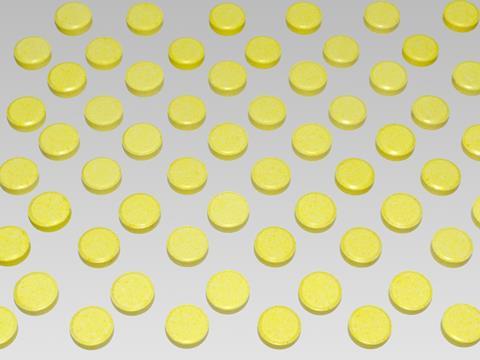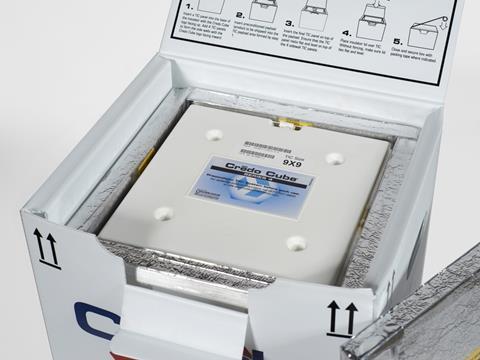The clock is ticking on the EU Falsified Medicines Directive, which comes into force in February 2019. Are the pharma brand owners and CMOs ready? And beyond compliance, what is the industry making of the opportunities presented by serialisation? Five industry insiders share their insights with Packaging Europe.

Struggling and outsourcing
Erik Haeffler (VP of Manufacturing Services and head of CSR, Recipharm)
Serialisation should now be at the top of everyone’s agenda. Implementing a solution requires a huge amount of time and dedicated resource and companies should not underestimate how time-sensitive the task of complying with the EU FMD has become.
A complex landscape, with multiple market requirements and various software, hardware and data management demands, means that companies without previous experience of track and trace are likely to struggle to meet the February 2019 deadline. With this in mind, we are beginning to see companies turning to contract partners with tried and tested solutions in place and it is likely this outsourcing trend will continue.
While serialisation regulations in Europe are relatively new, companies should be proactive in their approach to the new legislation. The additional benefits beyond compliance, such as improved efficiencies and reduced complexity of in-batch reworks and recalls, will inevitably lead to a more streamlined supply chain and this is something we should all be working towards.
Onrushing deadlines
Jean-Marie Aulnette (VP EMEA Sales, TraceLink), talking to Packaging Europe at Nexus 17
It’s scary! Some CMOs have been preparing for a long time but many have been afraid to open their eyes, due to the costs and complexities involved. But if they don’t start now, they will be in trouble. The process of achieving compliance is longer than you might imagine. Companies need to formulate their approach, then order solutions, then install them across their packaging lines – and then have the new systems validated.

The serialisation challenge is of course not just about a contract manufacturer or packaging line adapting its own equipment. It involves integrating the whole spectrum of suppliers and logistics solutions within a supply chain, each of which may develop their own data protocols, and for exporters satisfying the regulatory environment in each market.
Our proactive task is to connect entities. The purpose of our solutions is to provide access to data to everyone in the supply chain, enabling all of our customers to access their data using the tools they require to make sense of it. Obviously, there are lots of opportunities to leverage data, wherever it can be collected. For instance, relating to temperature control across the supply chain. As we know, this information can also be extended to the end consumers.
This is why we are developing solutions such as the new, integrated Compliance and Digital Information Platform for pharmacies with EU FMD requirements. The mobile and web-based application enables any pharmacy in the EU to easily comply with verification and decommissioning requirements under the FMD while simultaneously delivering a real-time dashboard for business insights on medicine scans, expiry dates, dispensation trends, product inventory and more. The new platform provides a single destination for pharmacies to meet their EU FMD requirements, which take effect in February 2019. Pharmacists who use the application will also benefit from user-friendly dashboard analytics that provide valuable insights from all transaction information that is captured within the application.
FMD brings opportunities as well as challenges
Ettore Cucchetti (CEO, ACG Inspections)
Along with the varied challenges brought about by the EU FMD it offers great opportunities for the pharmaceutical industries to invest in improved digital architectures.
Serialisation is a process in the pharmaceutical industry, under Track and Trace procedures, where all drugs are bar coded using country specific regulations and GS1 standards. By doing this, the uniqueness of the units are ensured by the data matrix code instead of formerly used barcode. Usually Track and Trace solutions consists of central system with data management which assigns unique codes to products. Line level systems use these unique codes and print them on product package or on labels in the form of machine readable codes and/or human readable codes. Serialisation is not a choice any more, with countries setting compliance deadlines, it becomes mandatory for companies to plan for Track and Trace implementation.
companies must be conscientious and meticulous when selecting the right vendor. Careful considerations should be given to long term requirements, balancing the desire for seamless implementation with short term needs of basic compliance. The focus should be on who is going to be their long-term partner to help define production efficiencies and protect values. This process requires a high degree of expertise and experience in pharmaceutical processes. It is also a vital IT project that impacts on future manufacturing requirements. Projects should be carefully thought-through by breaking them down into various areas, covering the acceptance of past weaknesses, understanding present challenges and planning future directions. They must be prudently structured to provide all the data and analytics needed for supply-chain management, yield optimisation and brand protection.

Manufacturers should embrace a broader scope when planning their serialisation strategies, rather than simply considering deployment as a mere compliance requirement. The ideal supplier delivers guidance for the authentication and transformation of manufacturing processes needed by the pharmaceutical industry of the future. Multiple international organisations like GS1, EPC, etc have defined the structural and semantic features and security methods in determining the codes of products in the market. These standards are a reference for multiple projects for successful implementations and execution.
Serialisation results in numerous benefits including brand protection, improved customer confidence and a robust supply chain. Validation of product authenticity by the pharmacy through barcode on secondary packaging would make easier catching of counterfeits before dispensing to patients. Maintaining traceability of the product with identification to provide visibility through the supply chain is also a prime factor achieved by serialisation. Implementation of Track and Trace solution enables distributors to capture information related to shipments for potential recall processing in more efficient and hassle-free way.
Coherent strategies for diverse regulations
Carlos Machado (serialisation director US, SEA Vision)
With the FMD deadline looming closer, it is time for a sense of urgency around serialisation implementation. Clearly, there are many companies that are behind in their preparations, and this is particularly the case for those small and mid-sized businesses that have delayed making the necessary investment, in terms of both technology and internal resources.
As we are operating in a global industry, with many companies supplying to multiple markets, one of the greatest challenges is understanding the different track and trace legislation across the world. In order to implement a coherent strategy, the first step must be to clearly map out which of your products, packaging lines and sites will be impacted by new regulations. Recognising that serialisation is far more complex than simply installing new equipment on a packaging line is important for success too. Consider the data challenges and need for connectivity and communication across the supply chain. Take the opportunity to revisit and refine standard operating procedures (SOPs) and explore opportunities to improve overall equipment effectiveness (OEE). Taking a holistic view of your operations and thinking through the additional benefits that can be gained will mean you embrace the opportunity to add value beyond compliance.
Embrace the Cloud
Adam Tetz (director of worldwide marketing, Peli BioThermal)
There is an increase in the introduction of information-centric capabilities to assist with the safe shipping of pharmaceuticals around the globe. Packaging companies are increasingly utilising advanced asset management software systems, which are in place specifically to ensure pharmaceuticals are shipped to the right location, at the right time and critically, that they arrive in the right condition.
Companies deploying pharmaceutical shipments worldwide benefit from the introduction of new technological advancements including web-based asset management software solutions, designed to track individual shipments globally. Integrating these Cloud-based systems offers a range of capabilities benefiting the industry including options to set up automatic scheduled maintenance, next shipments alerts and produce customisable reports.
The industry is also seeing a growing trend to deploy reusable systems coupled with asset management SaaS (software as a service) and reaping the associated benefits. These systems can automatically collect and analyse data from company data logger outputs. Currently operating in the market is a range of SaaS products providing collection and analysis of brand-agnostic sensor data, as it’s linked to a variety of smart packaging options allowing packaging vendors to track a diversity of data including vibration, light, humidity, temperature and more.

These software platforms capture and monitor information throughout the course of the shipments trip. The data retrieved and shared can help pharmaceutical companies make more informed choices on the most appropriate packaging systems to deploy, depending on the specific shipping lanes and routes their payload will navigate. At Peli BioThermal we utilise our comprehensive asset management software – Crēdo ProEnvision™ – and global service centre solutions to help customers manage the entire life cycle of their shipping inventory of Crēdo™ temperature controlled packaging. These technologies and services help life science industry clients reduce payload risk, distribution costs and their environmental impact ensuring temperature sensitive, critical and high value payloads reach their destination safely.











